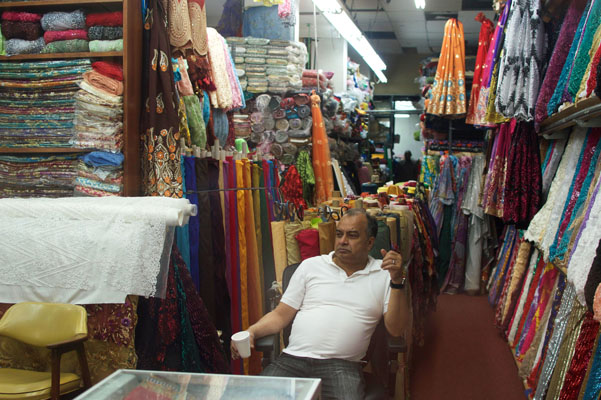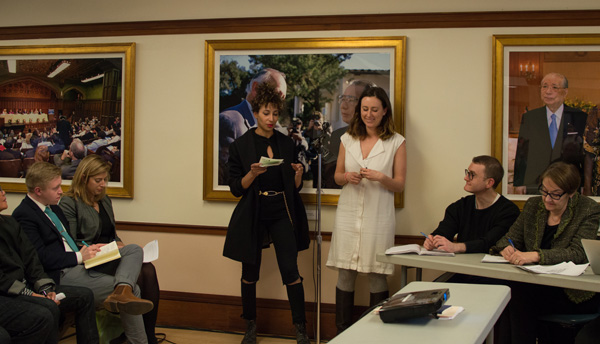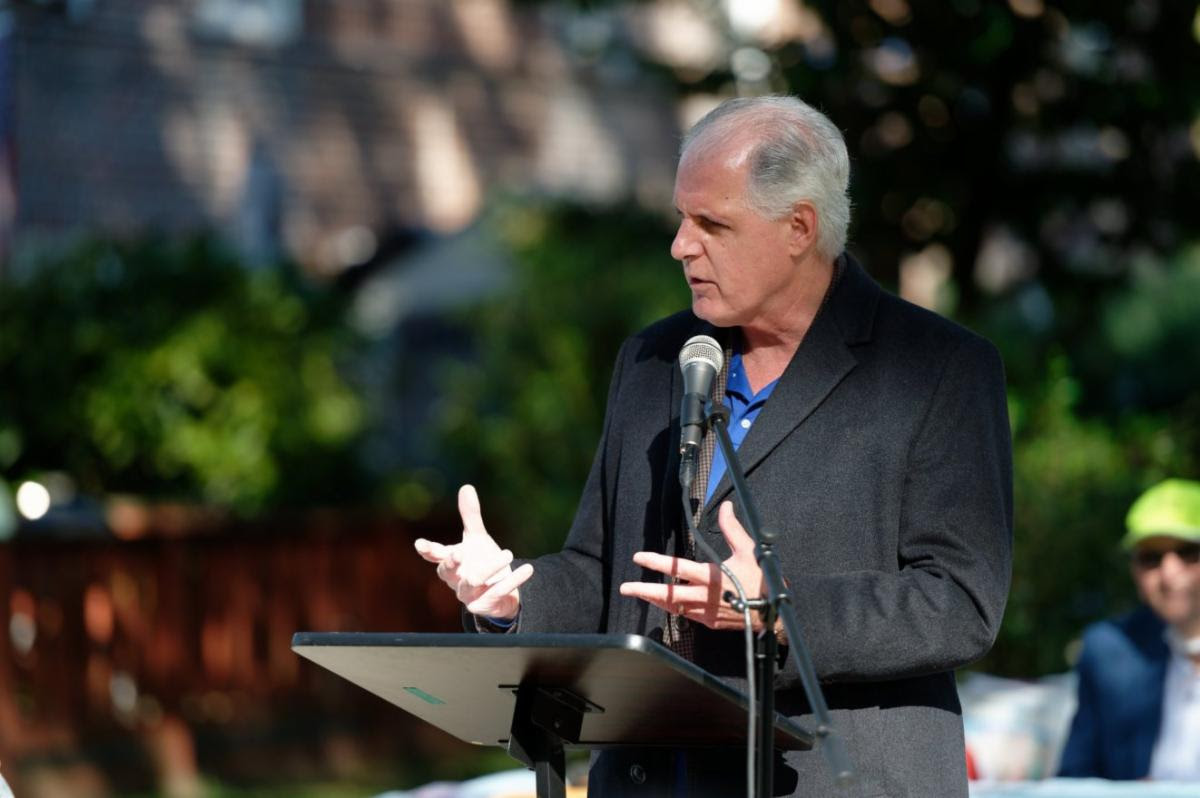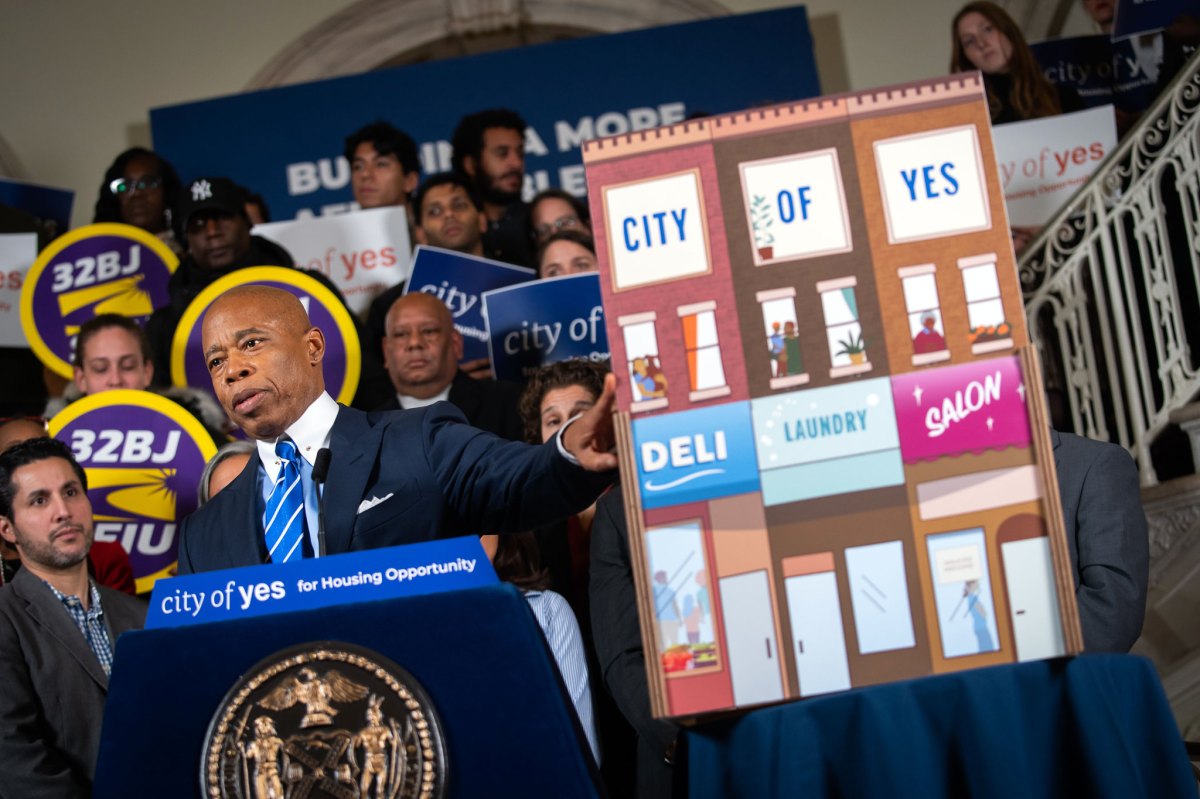
BY JACKSON CHEN | The city is proposing to revise the zoning framework of the Garment District, which has seen a steady drop of manufacturing availability and a spike in hotel developments. However, many of the area’s remaining workers and business owners are finding the city’s approach to be rushed and flawed.
During a Community Board 5 presentation on March 22, the city’s Economic Development Corporation (EDC), alongside the Department of City Planning, presented a proposal for reworking the Garment District zoning. The special section of Midtown Manhattan is bordered roughly by West 35th and 40th Streets and Broadway and Ninth Avenue. The Garment District’s current zoning allows for building types categorized as manufacturing space, commercial use, residential, or mixed-use.
Unique to the Garment District, property owners looking to convert their manufacturing space into office use have to date been subject to a 1:1 preservation requirement that says that every new square foot of office space must be matched by the preservation of a square foot of manufacturing space.
That framework, created in 1987, has clearly not achieved its objective. According to the EDC’s numbers, the 9 million square feet of production space in the 1980s has shrunk to just 830,000 square feet. Even while more than 8 million square feet of manufacturing space have disappeared, the amount of space preserved under the 1:1 requirement amounts to only 2 percent of the original 1987 manufacturing inventory, or about 175,000 square feet, the EDC said.
While manufacturing was heading south, hotels were sprouting up around the neighborhood, with 12 dotting the district today and another 10 in the works, according to the EDC.
The stated goals of the rezoning are to allow what garment industry manufacturing that remains to stay over the next decade, while accommodating the area’s trend toward smaller companies, like startups and nonprofits, moving into office space. To accomplish this, the zoning proposal would maintain the current manufacturing and commercial zones, but in recognition of the failure of the 1:1 space preservation requirement, eliminating that.
In response to the proliferation of hotel development, the zoning change would require new hotels to seek a special permit first, which should prioritize new office and residential creation where allowed.
While not part of the rezoning proposal regarding Manhattan’s Garment District, the EDC pointed out that the city is currently creating two garment hubs in Brooklyn, one at the Brooklyn Army Terminal that will have 500,000 square feet opening this coming summer and another at Bush Terminal, with 200,000 square feet opening by spring 2020. The agency also mentioned that there is currently about 2.4 million square feet of industrial space managed by private companies available in Brooklyn.
Regarding the Garment District rezoning proposal, the agency noted its efforts are still early in the process and have prioritized hearing community feedback before moving forward.
But for many in the garment industry, the plan already seems misguided and not informed by those familiar with the district’s manufacturing opportunities.
Borough President Gale Brewer, who spoke at the CB5 meeting, agreed with many of those who packed the meeting upset about the proposal. Brewer said that she doesn’t agree with lifting the 1:1 manufacturing preservation requirement in the current zoning, nor the incentives for moving business to Brooklyn.
“This plan does not include, in my opinion, a serious effort to maintain a garment manufacturing hub in the current district,” she said.
The borough president said she’s been very vocal about her criticisms to the EDC, which, she felt, presented disputable statistics. The agency numbers show that more than 34 percent of the garment industry workers live in Brooklyn, with Queens housing roughly 22 percent of its workers, and then Manhattan with 15 percent and New Jersey with a little over 12 percent.
Brewer said she wasn’t “convinced the research is correct,” noting how many industry workers have voiced unhappiness about the plan.

Meanwhile, an industry expert argued that 80 percent of his workers come from Queens. Joseph Ferrara, president of the New York Garment Center Suppliers Association, a trade group that represents more 7,000 city industry workers, said that his workers would have to switch from a 30-minute commute from Queens to the Garment District to an hour-and-45-minute commute down to a new Sunset Park garment hub in Brooklyn.
While the EDC said it had reached out to more than 100 affected companies, individuals, and organizations in developing its plan, Ferrara claimed otherwise.
“The direct stakeholders, the workers, the manufacturers, and the landlords, the city should be talking to them,” Ferrara said at CB5. “The city has not spoken to the manufacturers… [the EDC] already baked a plan and did not include two direct stakeholders, the workers and the manufacturers.”
Newcomer designer Alisa Nicole said it feels like the city is actively pressing longtime Garment District manufacturers to move to Brooklyn where, in her view, their businesses could be negatively affected.
“I feel like they’re trying to move the transition by offering something shiny,” Nicole said. “And then once [the manufacturers] get over there, it’s not going to be the same, the business might just crumble.”
Nicole, who has been running Alisa Nicole Swimwear for more than a year, said she values the working relationship she has with a nearby manufacturer, RCW Grading & Marking. The manufacturing prices are reasonable, she said, but as valuable are its expertise and willingness to teach her hands-on.
“It would be really sad overall if the Garment District lost the manufacturers in this way,” Nicole said. “More people actually want the Garment District to be hoist up and given more support. We need to give them more of a shining light.”
Robin Sokoloff, the founder and executive director of Loft227 — a Swiss Army knife of an incubator company that caters to all creative and production needs — said the zoning issues the agencies are confronting are beyond the control of the “garmentos.”
Sokoloff, who’s visited more than 200 sites in the Garment District, said that around 85 percent of them were vacant. She said she’s been rejected over and over again by the landlords who control the Garment District properties. She believes that the landlords are “icing out” her business and other garment industry enterprises with ever-increasing rents and refusals to negotiate leases.
But not everyone in attendance was dismissive of the rezoning proposal. The Garment District Alliance’s president, Barbara Blair, said the current zoning was not effective for the sustainability of the garment industry. She said the alliance supports the city’s proposal and commends the agencies trying to steer the area’s changing landscape in a positive direction.
“Our largest stakeholder in the neighborhood are fashion designers,” Blair said. “And if fashion designers don’t have some place in the city of New York that can manufacture their goods, that ecosystem will fall apart.”
But the overwhelming majority of those who spoke up at CB5 said the city really needs to reach out to the industry’s manufacturers and workers before moving forward. In fact, Brewer argued the city should start the process over.
“This is way too important in this region in Manhattan and to the entire city, to rush out with a text amendment without having a robust discussion… and considering all the options and any potential adverse consequences,” she said at the meeting. “Once a delicate ecosystem is disturbed, there may be no putting it back together.”



































